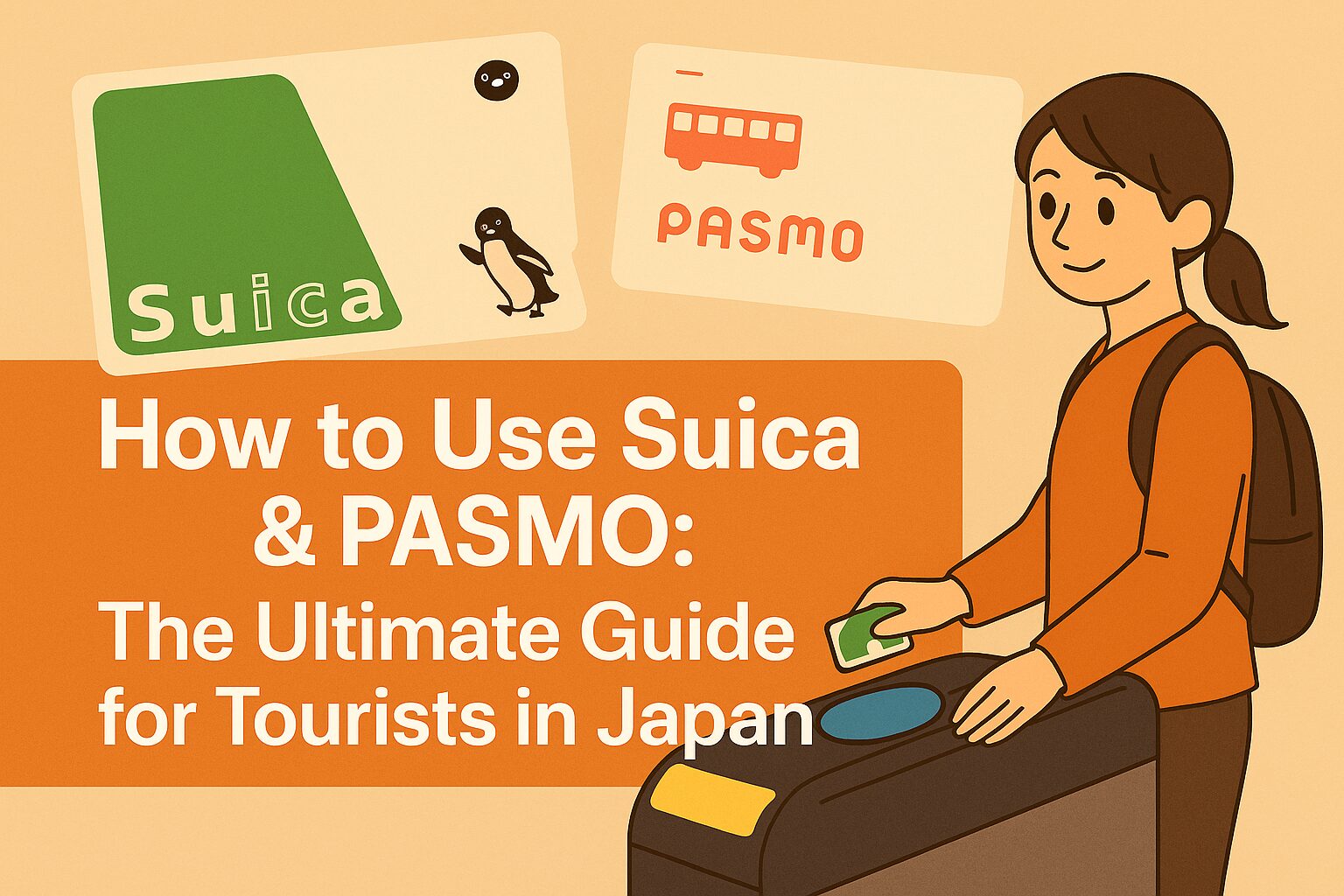👋 Introduction
If you’re visiting Japan, getting around can feel intimidating at first. With countless train lines, buses, and shops, handling cash everywhere can quickly become a hassle. That’s where Suica and PASMO, Japan’s most popular IC cards, make your trip simple and stress-free. These rechargeable smart cards let you tap to pay for trains, buses, convenience stores, vending machines, and more. Here’s everything you need to know to use them like a pro.
🚉 1. What Are Suica & PASMO?
Both Suica and PASMO are rechargeable smart cards that store electronic money.
- Suica: Issued by JR East (Japan Railways).
- PASMO: Issued by private railway and bus companies in the Tokyo area.
The difference? Almost none for travelers — both work on all trains, subways, and buses in Tokyo and can be used in most other major cities like Osaka, Kyoto, and Fukuoka. Think of them as universal travel cards.
🛒 2. Where Can You Use Them?
Suica and PASMO are more than just transport cards. You can use them for:
- Trains and Buses: Just tap the card at the ticket gate.
- Convenience Stores: 7-Eleven, Lawson, FamilyMart, and others.
- Vending Machines: Grab drinks or snacks with a tap.
- Restaurants and Cafés: Many fast-food chains and some casual restaurants accept IC cards.
- Taxis and Shops: Look for the IC logo at payment counters.
They’re essentially a cashless wallet you can carry everywhere.
🛒 3. How to Get One
Getting a Suica or PASMO is easy and tourist-friendly:
- Where to Buy: Ticket machines at airports (Narita, Haneda) or major stations like Tokyo, Shinjuku, and Shibuya.
- Cost: A deposit of 500 yen (refundable when you return the card) plus your chosen balance.
- Digital Option:
- Add a Suica to your Apple Wallet (iPhone) or Google Pay (Android).
- Digital cards don’t require a deposit and are super convenient.
💴 4. How to Recharge (Top Up)
Keeping your card loaded is simple:
- Ticket Machines: Look for machines labeled “Charge” at train stations.
- Convenience Stores: Most can recharge your balance at the register.
- Payment Options: Cash is the most common, but some machines accept credit cards.
- Auto-Charge: Available only for certain cards linked to Japanese credit cards (not for short-term tourists).
Always check your balance when tapping in — low balance can block your entry or exit at the gate.
🎟️ 5. Tourist-Friendly Options
If you’re in Japan short-term, consider these options:
- Welcome Suica: No deposit required, valid for up to 28 days. Perfect for tourists.
- Tokyo Subway Ticket Combo: Some passes include unlimited subway rides plus a Suica balance.
- IC Cards in Other Cities: In Kansai, you’ll find ICOCA; in Nagoya, TOICA. All are interchangeable in most areas.
⚠️ 6. Travel Tips & Troubleshooting
- What if your balance runs out?
- Top up at any station or convenience store.
- What if you forget to tap?
- Speak to a station staff member — they’ll adjust your fare.
- Lost your card?
- If registered (like Mobile Suica), you can transfer your balance to a new card. Physical cards without registration can’t be replaced.
- Refunding your deposit:
- Return the card at JR East or PASMO service counters to get your 500 yen deposit back (minus a 220 yen handling fee for Suica).
🙌 Conclusion
With Suica or PASMO, exploring Japan becomes a breeze. From seamless train rides to quick payments at convenience stores, these cards save time and effort so you can focus on enjoying your trip. Whether you choose a physical card or a digital version, once you start tapping, you’ll wonder how you ever traveled Japan without one.
💡 Want more Japan travel tips?
Check out our blog for guides on etiquette, food, culture, and the best spots to visit!



コメント